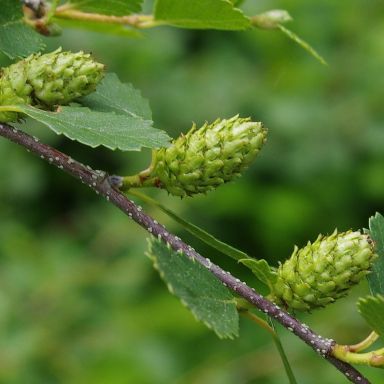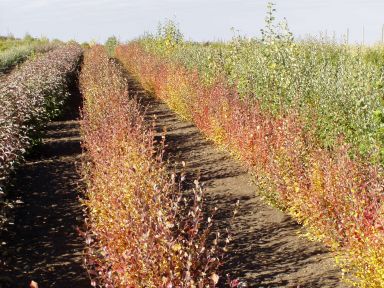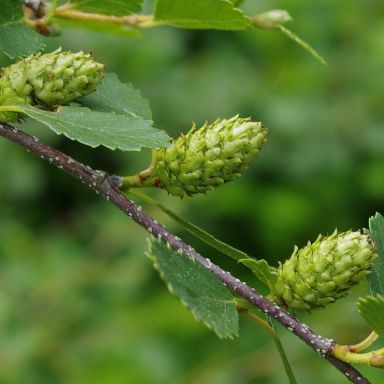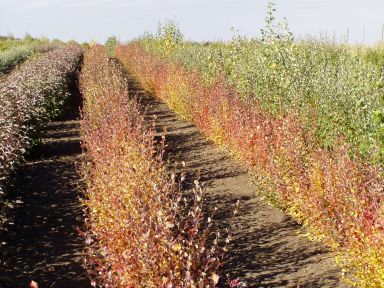Wild About Flowers
Betula glandulosa - Dwarf Birch
Betula glandulosa - Dwarf Birch
Couldn't load pickup availability
Dwarf Birch is a hardy, slow-growing shrub with small, round, toothed leaves that turn brilliant shades of yellow, orange, and red in the fall. Well adapted to cold northern and alpine environments, it thrives in bogs, tundra, and moist meadows, where it helps stabilize soil and withstands wind, frost, and saturated conditions. Its compact, multi-stemmed form and dense branching make it an excellent choice for erosion control, wetland restoration, and naturalized plantings.
Highly adaptable, Dwarf Birch also performs well in yards and gardens, offering a cold-hardy, resilient alternative to Cotoneaster, which may be invasive in some regions. While not a preferred browse species, young plants may be grazed occasionally in high-pressure areas, though the dense branching structure offers some protection and allows for recovery.
Bloom Times & Plant Sizes
Bloom Times & Plant Sizes
Important Information - The "Bloom Period" is an indicator of the time period within which the wildflowers will bloom and does not describe the time period that a single plant will bloom. The "Sizes" listed are intended to be a general guideline to consult during plant selection. - Plant growth and bloom times will vary depending on geographical location & individual site conditions.
Edible & Medicinal Info Disclaimer
Edible & Medicinal Info Disclaimer
The Edible & Medicinal information on this site is for informational purposes only and should not be acted on without thorough research and professional guidance. We are not responsible for any adverse effects resulting from the use of or misidentification of plants.
Share


Plant Specifics
Seeds Per Pack
Seeds Per Package: 20
Light Conditions
- Sun
- Part Shade
Soil Conditions
- Moist
- Wet
- Loam
- Rich
- Seasonally Moist
- Well Drained
Height
- 48" +
Width
- 24" - 36"
Bloom Colour
- Green
Month of Bloom
- August
- Septemeber
- October
Vigorousness
- Moderate
- Fast
Deer Resistance
- Moderate
Features
- Birds
- Bees
- Fall Color
- Attractive Seed Heads
- Urban Spaces
- Rural Spaces
- Good in Containers
Chinook Exposure
- Fully Exposed
Distribution Info
Native across much of northern North America, Dwarf Birch is highly adapted to poorly drained and nutrient-poor conditions, making it a dominant shrub in subarctic and alpine tundra regions.
Traditional Edible & Medicinal Info
Betula glandulosa has a long history of medicinal use, the leaves and twigs contain salicylates, traditionally brewed into teas or applied as poultices to reduce pain, fevers, and inflammation. The bark and young shoots have also been used as a tonic and mild antiseptic.


